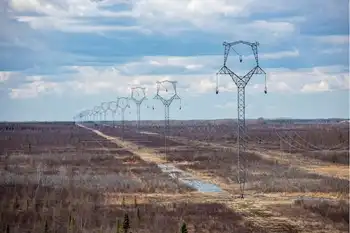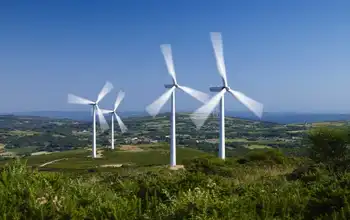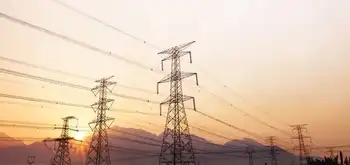Debut of carbon sequestration in Germany
By ABC News
Substation Relay Protection Training
Our customized live online or in‑person group training can be delivered to your staff at your location.

- Live Online
- 12 hours Instructor-led
- Group Training Available
Earlier this month, the world's first coal-fired power plant designed to capture and store carbon dioxide that it produces began operations in Spremberg. The pilot plant has been built at a power station that, under Communist rule last century, used to belch out clouds of sulfurous smoke from burning brown coal, or lignite.
"Industrial history is being written," says Tuomo Hatakka, chair of the European board of Vattenfall, the Swedish power company behind the new plant. Indeed, the development of carbon capture and storage (CCS) technology is seen by many experts as essential to help the world cut carbon-dioxide emissions in coal-fired power stations.
Vattenfall's small 30-megawatt plant burns the lignite in air from which nitrogen has been removed. Combustion in the resulting oxygen-rich atmosphere produces a waste stream of carbon dioxide and water vapor, three-quarters of which is recycled back into the boiler.
By repeating this process, known as oxyfuel, it is possible to greatly concentrate the carbon dioxide. After particles and sulfur have been removed, and water vapor has been condensed out, the waste gas can be 98 percent carbon dioxide, according to Vattenfall.
The separated carbon dioxide will be cooled down to -28 °C and liquefied. Starting next year, the plan is to transport it by truck 150 miles northwest, to be injected 3,000 meters underground into a depleted inland gas field in Altmark. Ideally, in the future, the gas will be carried by pipeline to underground storage, says Vattenfall.
Compressing and transporting the carbon dioxide takes energy, as does the initial extraction of nitrogen. So these processes reduce the overall efficiency of the plant, although Vattenfall is attempting to counter this by investigating ways of boosting the efficiency of the boiler — by predrying the coal, for example.
The aim, according to the company's vice president, Lars Strömberg, is to develop a power plant with "almost zero" pollution. He says that achieving no emissions will be impossible, "but we will come very, very close to this target."
In an initial three-year testing program, the Schwarze Pumpe pilot plant is expected to assess how components function together and exactly what proportion of carbon dioxide can actually be separated. Using the information gained, Vattenfall plans to scale up to a 300-to-500-megawatt demonstration plant by 2015 and to 1,000-megawatt commercial plants after 2020.
The opening of the plant divided environmental groups in Europe. Some regard CCS technology as a potentially valuable weapon in the battle against climate change, while others see it as an expensive distraction from the pursuit of cleaner renewable-energy technologies.
But the plant was greeted warmly by CCS specialists. For Stuart Haszeldine, a geologist from the University of Edinburgh, in Scotland, it was "a very welcome, and tangible, statement that CCS can be made to work." The European Union wants a further 10 to 15 CCS plants in operation by 2015, he points out.
"Only by actually building plants like this can poorly known costs and risks be better understood and enable the routine deployment of CCS, which so many politicians and energy analysts perceive to be essential for climate cleanup," says Haszeldine. "This is the first; the world now needs lots more."
Oxyfuel is one of three possible CCS technologies. Another uses a scrubbing process to try to capture carbon dioxide in the flue gases emitted after coal has been burned in a conventional power plant. The third involves gasifying the coal, creating hydrogen for generating electricity and carbon monoxide, from which carbon dioxide can be formed and separated.
According to Howard Herzog, a chemical engineer at MIT Laboratory for Energy and the Environment and manager of MIT's carbon-sequestration initiative, it's too soon to say which of the clean-coal technologies will be the best.
The opening of the oxyfuel plant — which he attended in Germany — was "exciting" because it represented "a significant step forward in developing CCS technology," he says. "Vattenfall's pilot plant will not only develop oxyfuel combustion technology; it will also provide critical information on the potential of oxyfuel combustion as a CO2-capture technology."











